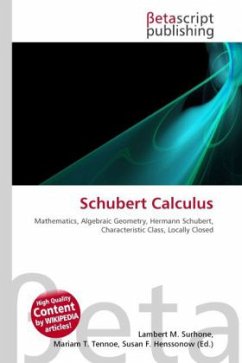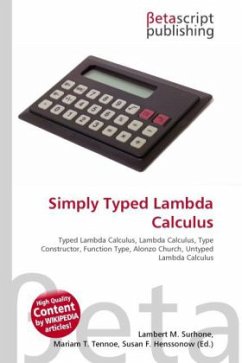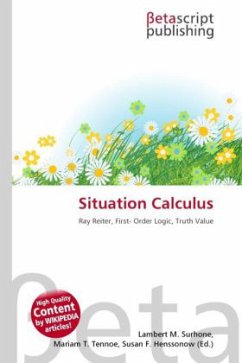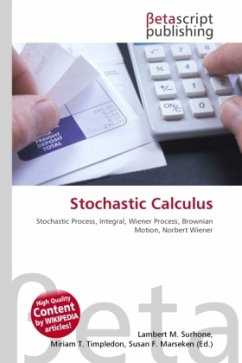
Schubert Calculus
Versandkostenfrei!
Versandfertig in 6-10 Tagen
19,99 €
inkl. MwSt.

PAYBACK Punkte
10 °P sammeln!
High Quality Content by WIKIPEDIA articles! In mathematics, Schubert calculus is a branch of algebraic geometry introduced in the nineteenth century by Hermann Schubert, in order to solve various counting problems of projective geometry (part of enumerative geometry). It was a precursor of several more modern theories, for example characteristic classes, and in particular its algorithmic aspects are still of current interest. The objects introduced by Schubert are the Schubert cells, which are locally closed sets in a Grassmannian defined by conditions of incidence of a linear subspace in proj...
High Quality Content by WIKIPEDIA articles! In mathematics, Schubert calculus is a branch of algebraic geometry introduced in the nineteenth century by Hermann Schubert, in order to solve various counting problems of projective geometry (part of enumerative geometry). It was a precursor of several more modern theories, for example characteristic classes, and in particular its algorithmic aspects are still of current interest. The objects introduced by Schubert are the Schubert cells, which are locally closed sets in a Grassmannian defined by conditions of incidence of a linear subspace in projective space with a given flag. For details see Schubert variety. The intersection theory of these cells, which can be seen as the product structure in the cohomology ring of the Grassmannian of associated cohomology classes, in principle allows the prediction of the cases where intersections of cells results in a finite set of points; which are potentially concrete answers to enumerative questions.












